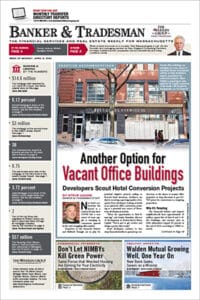
Lew Sichelman
The cost of homeowners insurance is on the rise, and not just because property values went up – almost 20 percent across the board – during last year’s homebuying frenzy.
How high insurance costs may go is anybody’s guess at this time. But the Federal Emergency Management Agency is now operating under a new flood insurance rate structure that changes how it looks at risk.
Furthermore, the growing number of natural disasters is forcing insurers to reevaluate their risk, with the end result almost assuredly being higher premiums. Weather is even starting to inform lending decisions, with the distinct possibility that lenders will charge more for loans in high-risk areas – or not write them at all.
Weather events always are a threat. But during last year’s first nine months alone, the National Centers for Environmental Information counted a record 18 major storms, each with losses exceeding $1 billion.
FEMA Ups Premiums
To bolster its balance sheet, FEMA, which oversees the National Flood Insurance Program, has switched gears. Instead of rating risk solely on whether a house is located in a flood zone or not, the new formula looks at a variety of factors, including distance to a flood source, the severity and frequency of flooding and property characteristics such as the cost to rebuild the property in the event of damage.
The result: Some 3.3 million homeowners who currently have coverage will pay more, according to a study from Porch, a provider of software and services to several home service industries.
The typical NFIP premium is $734 annually. FEMA predicts that 77 percent of those with flood insurance will see a price increase – a hike of about $88 a year for most, according to Porch’s calculations, but some by as much as $240 per year – with the remainder enjoying a lower premium. For those hit hardest, the increase will be spread over a few years.
Floods are not covered by homeowners insurance, but the costs of those policies are headed up, too.
“The growing number of climate events has left the insurance business reeling,” said Jennifer Rasmussen, the author of a new white paper detailing what lies ahead for policy holders and a vice president at real estate software firm SitusAMC. “As the intensity and scope of future catastrophes grow, insurance rates for property owners will likely rise significantly.”
Not Just Coastal Floods
According to LexisNexis, 39 percent of all home insurance claims in 2020 were due to catastrophic weather. And the SitusAMC paper said the rise in the number of severe hurricanes, wildfires, tornadoes and other weather events linked to climate change has created significant risk for insurance companies.
The impact is not limited to the coasts, either. Winter storms in Texas, for example, accounted for 40 percent of total property losses for insurers in the first half of 2021. And nonprofit Climate Central said the Lone Star State, not California, has the highest threat level for wildfires, with 72 percent of the state’s population at risk.
Of course, recent demographic and migration trends are exacerbating the problem as more people move to flood- and fire-prone regions. A projected 1.2 million more houses will be at risk of flooding over the next 30 years, according to data from the First Street Foundation.
All of this has the mortgage business on edge as companies decide what to insure and at what cost. Some lenders have already started incorporating ATTOM Data Solutions’ climate data into their decision-making scenarios, said the firm’s Todd Teta. And more can be expected to do so.
Predictions Seen as Insufficient
A report from the research affiliate of the Mortgage Bankers Association said lenders “will not be spared” from the ravages of climate change. The physical destruction caused by extreme weather events will “influence the behavior” of lenders, investors and government-backed loan programs, it said.
The report said severe weather could lead to more mortgage defaults, placing increasing stress on housing and housing finance’s sophisticated system of distributing risk across multiple stakeholders, including consumers, homebuilders, appraisers, originators and mortgage investors.
MBA officials say high-level industry discussions have taken place about incorporating weather-related risk into underwriting decisions. But Chief Economist Mike Fratantoni said that while regional climate models offer enough data, that’s not the case for property-level decisions.
“There just isn’t enough information to make the call,” he said.
Meanwhile, the Federal Housing Finance Agency, which oversees Fannie Mae, Freddie Mac and the Federal Home Loan Banks, has told these key entities to designate climate change as a priority concern, and to actively consider its effects in their purchasing decisions.
Eventually, lenders could charge a higher rate for a loan on a higher-risk property. They could require a larger down payment or a larger homeowners insurance policy – perhaps even some sort of disaster policy. Or they just may not make the loan at all.
Lew Sichelman has been covering real estate for more than 50 years. He is a regular contributor to numerous shelter magazines and housing and housing-finance industry publications. Readers can contact him at lsichelman@aol.com.





